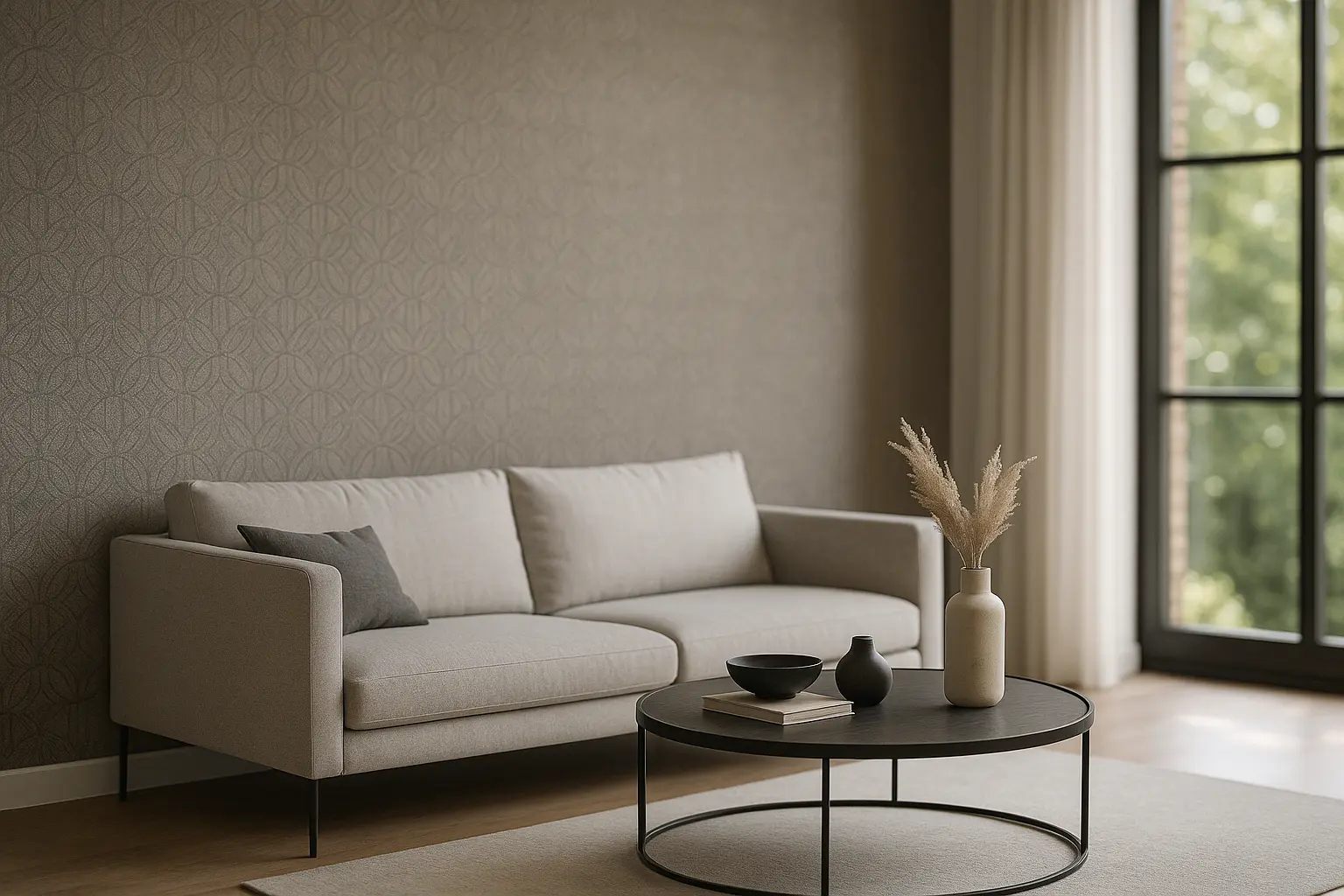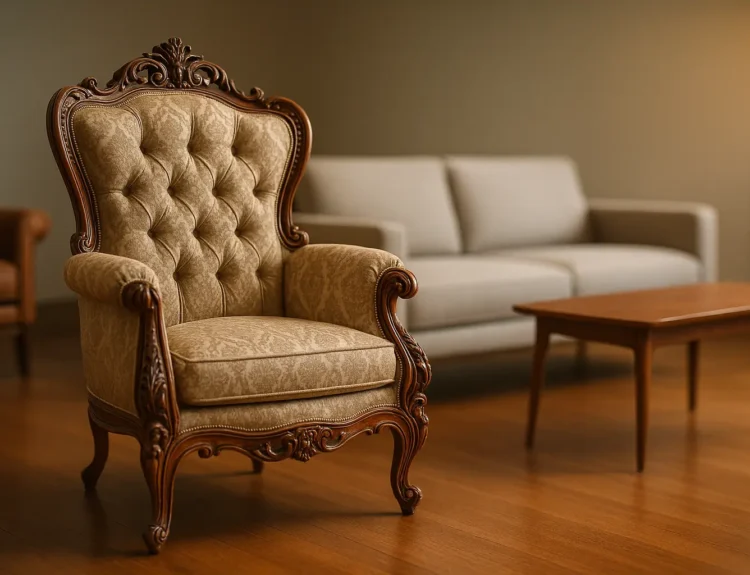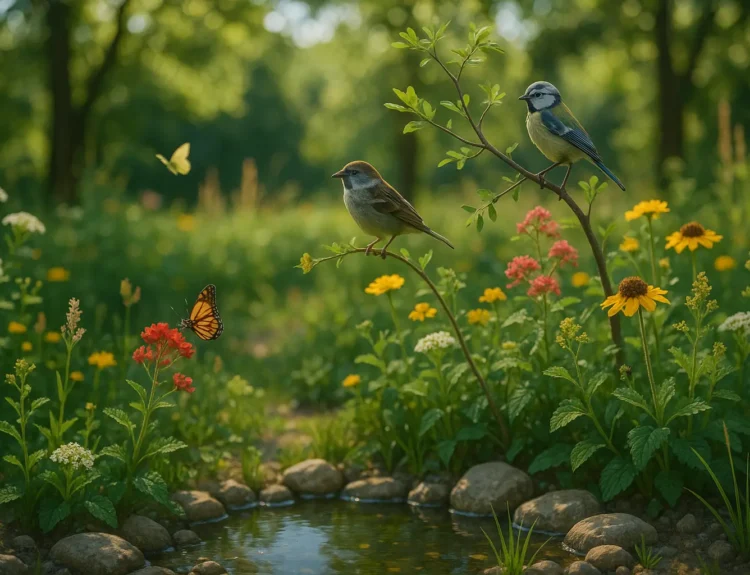In the ever-evolving world of interior design, the use of wallpaper has transcended beyond mere decoration, embracing a role as a cornerstone in crafting the atmosphere and identity of a modern home. As more individuals seek to express their unique styles through personalized spaces, wallpapers have resurfaced as a trendy choice, offering versatility and creativity that paint alone cannot.
Why choose wallpaper? Because it gives us the power to transform a blank wall into a statement piece, adding depth, texture, and character to any room. Whether we desire a minimalist white backdrop or a bold pattern that demands attention, wallpaper allows us to tailor our surroundings precisely to our tastes.
In this article, we’ll explore innovative techniques to incorporate wallpaper into our modern homes. Our journey will take us through various settings—from the calming sanctuaries of bedrooms to the vibrant hubs of living rooms. We aim to inspire with fresh ideas on how wallpapers can redefine your home‘s design.
Setting the Stage with Wallpaper
The first step in integrating wallpaper into our modern homes is understanding its potential to set the stage. Wallpapers aren’t just about covering a wall; they’re about crafting an environment that resonates with our personal style and the overall design ethos of our home.
Understanding Your Space
Identifying the core function of each room is crucial. Are we aiming to create a tranquil bedroom retreat with muted tones, or are we looking to make a bold impression in a bustling living room? By answering these questions, we can choose wallpaper designs that align with our intentions.
The Power of Patterns
Patterns can significantly influence the perception of a room. Vertical stripes can make ceilings appear higher, while horizontal lines can broaden a narrow space. Modern geometric designs add an element of intrigue, serving as the perfect conversation starter for any gathering.
Colors That Speak Volumes
Color choice is paramount. Soft whites and creams can introduce a sense of calm, while vibrant hues like deep black or jewel tones can energize and define a space. The key is to balance colors with the existing design elements, ensuring harmony throughout.
By weaving wallpaper into the design narrative, we can establish a foundation that enhances not only the visual appeal but also the emotional experience of any room.
Creating Focal Points and Accents
Once we have laid the groundwork, it’s time to explore how wallpaper can serve as a focal point or accent, elevating specific areas within our homes.
Feature Walls That Wow
One popular technique is the creation of a feature wall. By applying wallpaper to a single wall, we can draw attention to this area, creating a stunning backdrop for elements such as a bed’s headboard or a cozy reading nook. This approach allows us to experiment with bold styles and colors without overwhelming the entire room.
Integrating Art and Wallpaper
Why not merge art and wallpaper? Some wallpapers feature intricate designs that mimic fine art, offering an alternative to conventional wall hangings. This can be particularly effective in minimalist settings, where fewer elements create more impact.
Ceiling Statements
Often overlooked, the ceiling is an excellent surface to explore with wallpaper. By extending patterns or colors upward, we can add a whole new dimension to a room. This technique works wonders in spaces needing a little extra character, such as entryways or modern dining areas.
Through strategic placement and thoughtful design, wallpaper can serve as both a functional and aesthetic element, turning ordinary walls into extraordinary art.
Harmony and Balance in Design
In our quest to integrate wallpaper into a modern home, achieving harmony and balance throughout each room is vital. This involves not only choosing the right patterns and colors but also considering how wallpaper interacts with other design elements.
Balancing Boldness
While it may be tempting to go all out with vibrant wallpapers, we must ensure they complement—not clash with—existing furniture and decor. A balanced design invites a cohesive flow from one room to the next, creating a unified aesthetic that is both sophisticated and inviting.
Layering Textures
Incorporating varied textures can add depth and interest to a room. Consider pairing a textured wallpaper with sleek modern fixtures or soft, plush fabrics. This layering approach can enrich the sensory experience within a space.
Light and Color Considerations
Natural and artificial light play significant roles in how wallpapers are perceived. Light can alter colors and patterns, which may lead to unexpected effects. Testing wallpapers in different lighting conditions ensures they maintain their intended appearance throughout the day.
By understanding the delicate balance of elements in a room, we can use wallpaper to create an environment that is cohesive, inviting, and reflective of our individual style.
As we conclude our exploration into the world of wallpaper, it becomes apparent that its role in modern interior design is multifaceted and transformative. We have the opportunity to go beyond traditional applications, reimagining walls as canvases for creativity and expression.
In embracing wallpaper, we open doors to innovation—whether through bold patterns, subtle textures, or complementary accents. Every room becomes a testament to our personal taste, a reflection of our journey in crafting a home that is uniquely ours.
Looking ahead, the future of wallpaper in interior design is bright and boundless. As trends continue to evolve, so too will the possibilities, ensuring that wallpaper remains a timeless choice for those seeking to transform their homes with style and grace.
Let’s continue to explore, experiment, and innovate, allowing our spaces to tell the stories we wish to share.
FAQ
What are some modern ways to incorporate wallpaper into a contemporary living room?
Incorporating wallpaper in a modern living room can be achieved by using it as a feature wall. Opt for geometric patterns or subtle textures that complement the overall color scheme. Alternatively, wallpaper can be used to create a visual separation between different areas in an open-plan space.
Are there specific types of wallpaper better suited for a minimalist design?
Yes, minimalist designs often benefit from wallpapers with simple, clean lines and neutral colors. Look for wallpapers with a quiet texture, subtle patterns, or monochromatic palettes to maintain the minimalist aesthetic while adding depth to the space.
Can wallpaper be used in a modern kitchen, and if so, how?
Absolutely, wallpaper can be a stylish addition to a modern kitchen. Consider using it as a backsplash with moisture-resistant options or applying it to an accent wall. Choose patterns or colors that complement your cabinetry and appliances to create a cohesive look.
What are some tips for using wallpaper in a small modern bedroom?
In a small bedroom, opt for light-colored wallpaper with vertical stripes to create an illusion of height. You can also choose a feature wall with a subtle pattern to add interest without overwhelming the space. Ensure the design aligns with the room’s overall color palette to maintain a harmonious feel.
How can wallpaper be effectively incorporated into a modern bathroom design?
To effectively use wallpaper in a modern bathroom, select moisture-resistant options specifically designed for high-humidity areas. Choose patterns or textures that complement your tiles and fittings. Consider applying wallpaper above wainscoting or as an accent wall to add character without compromising functionality.



